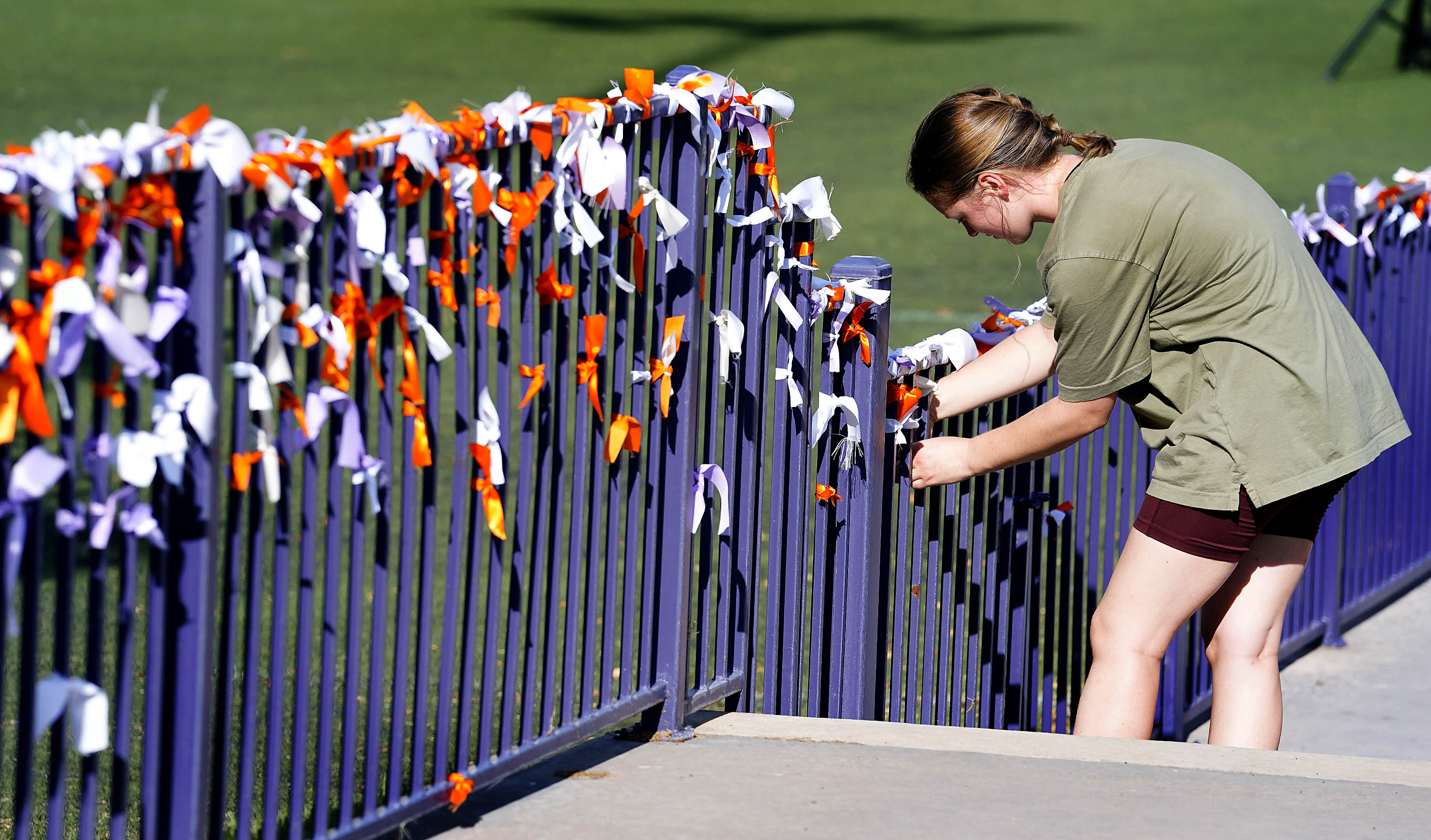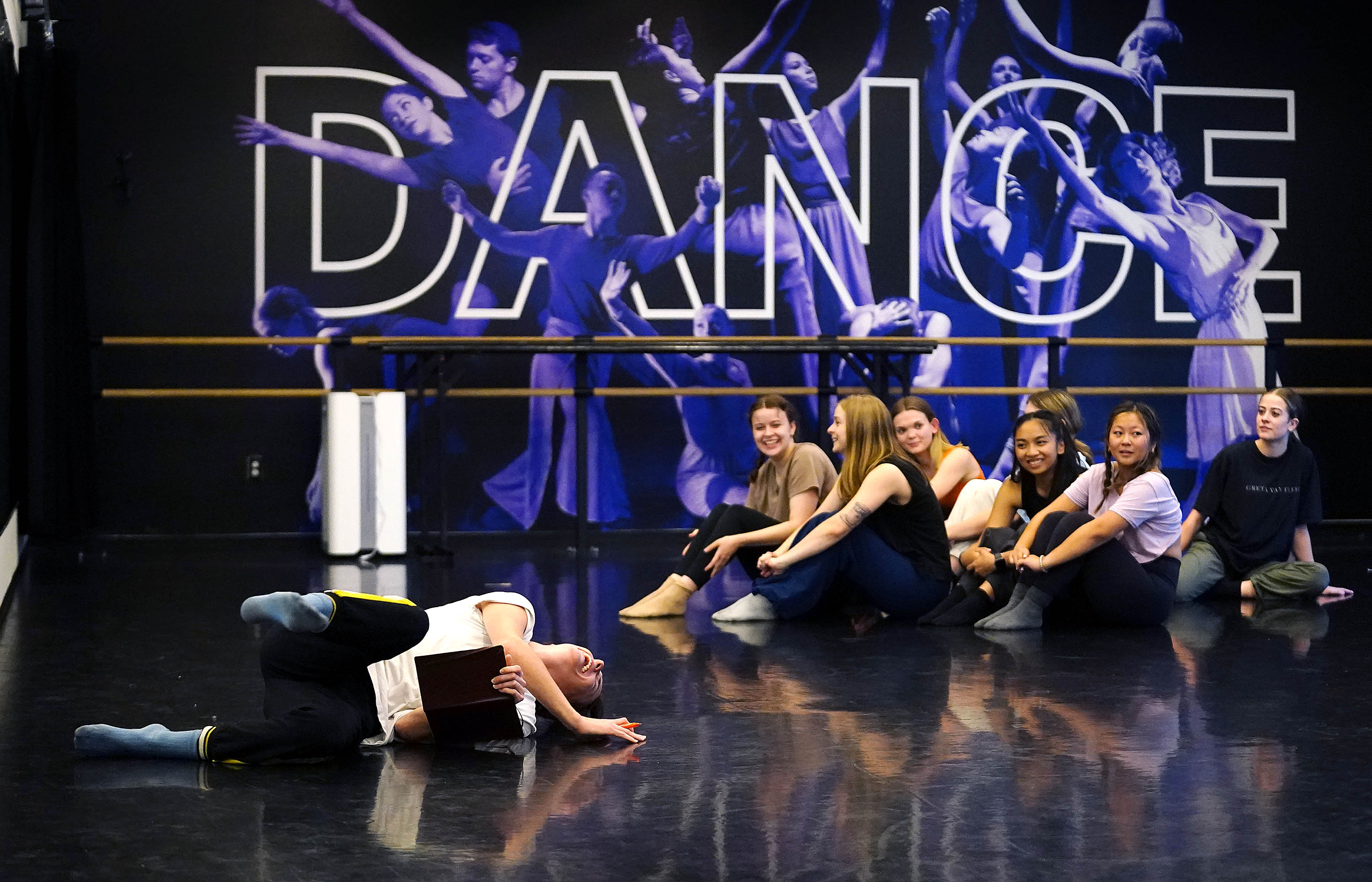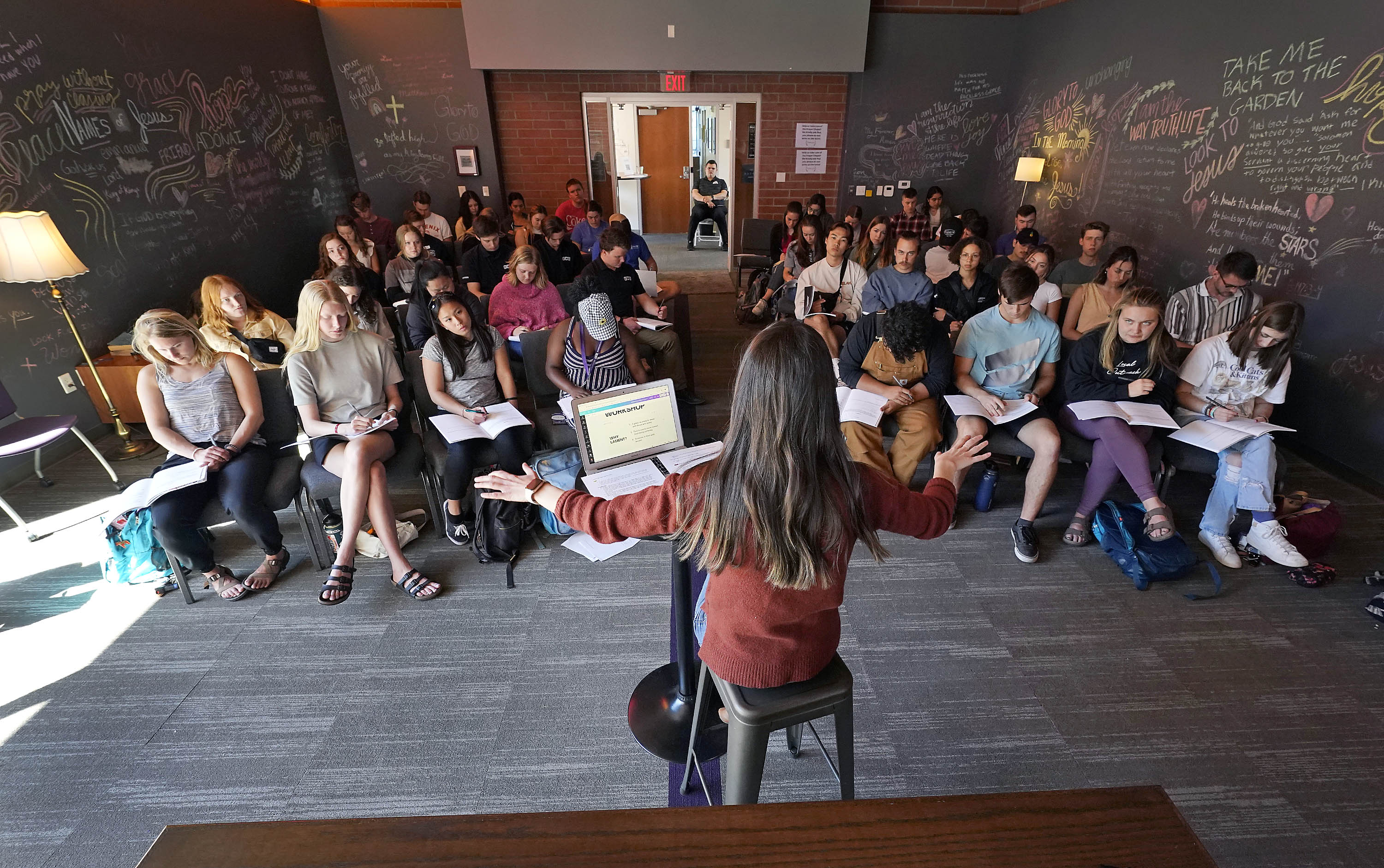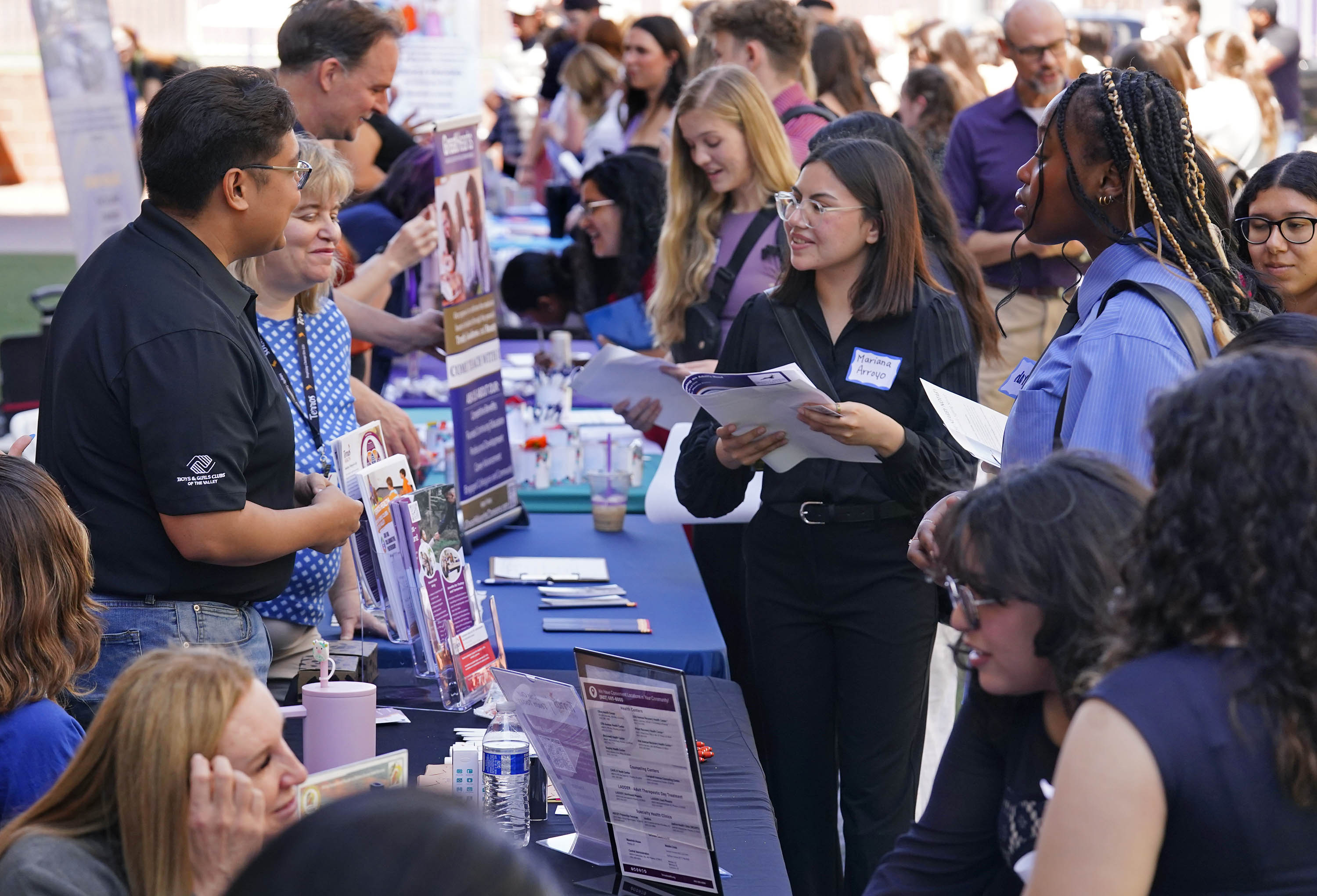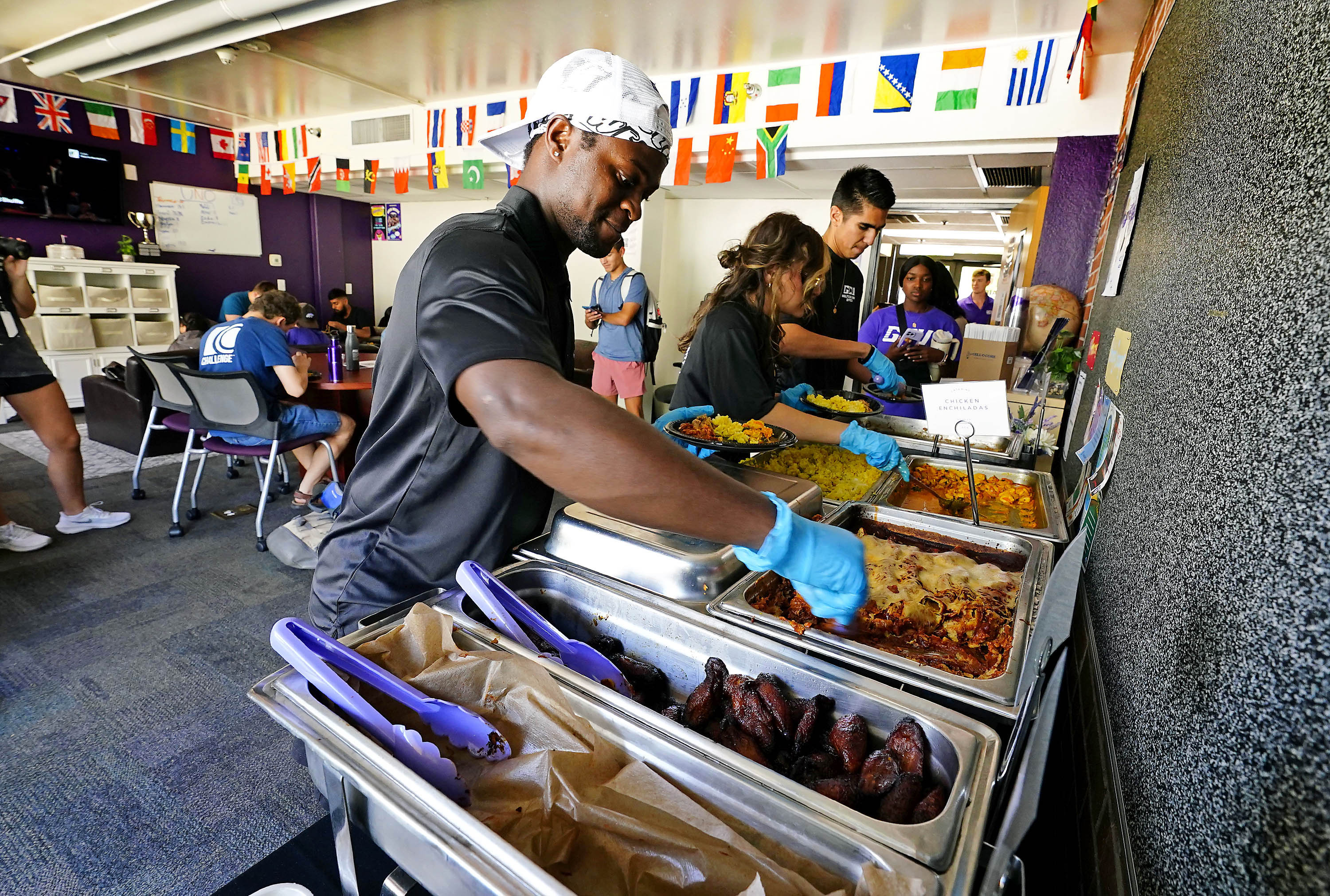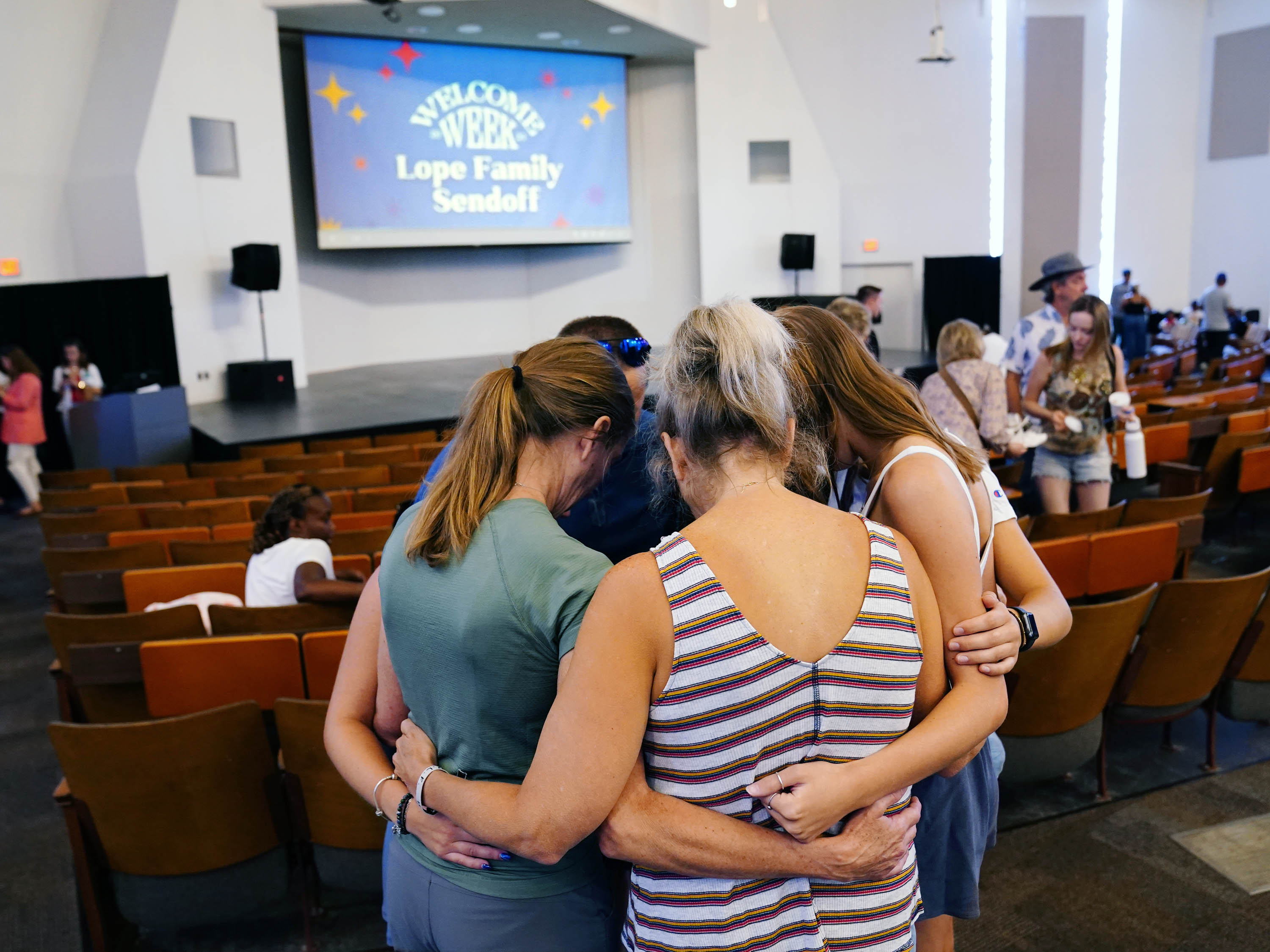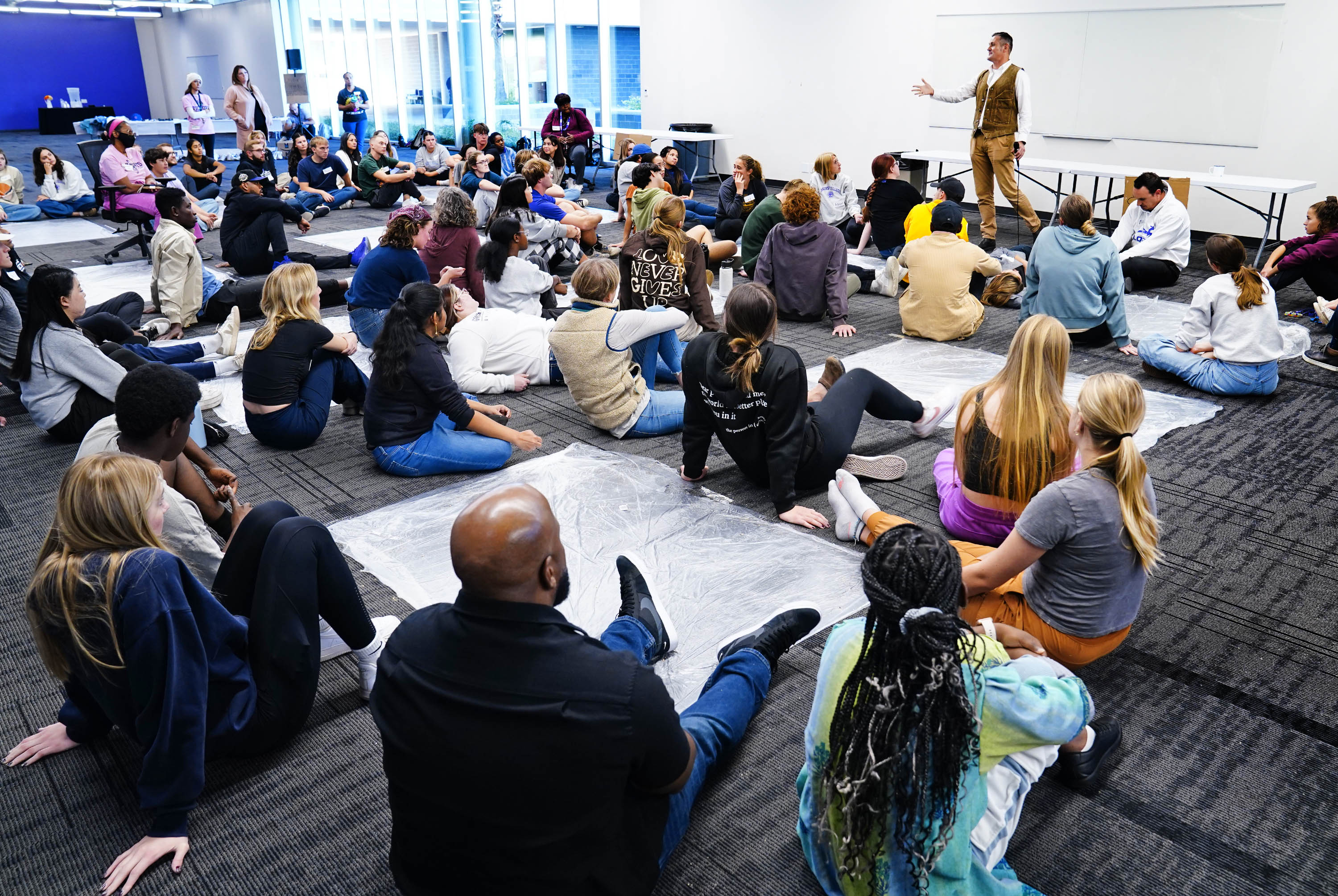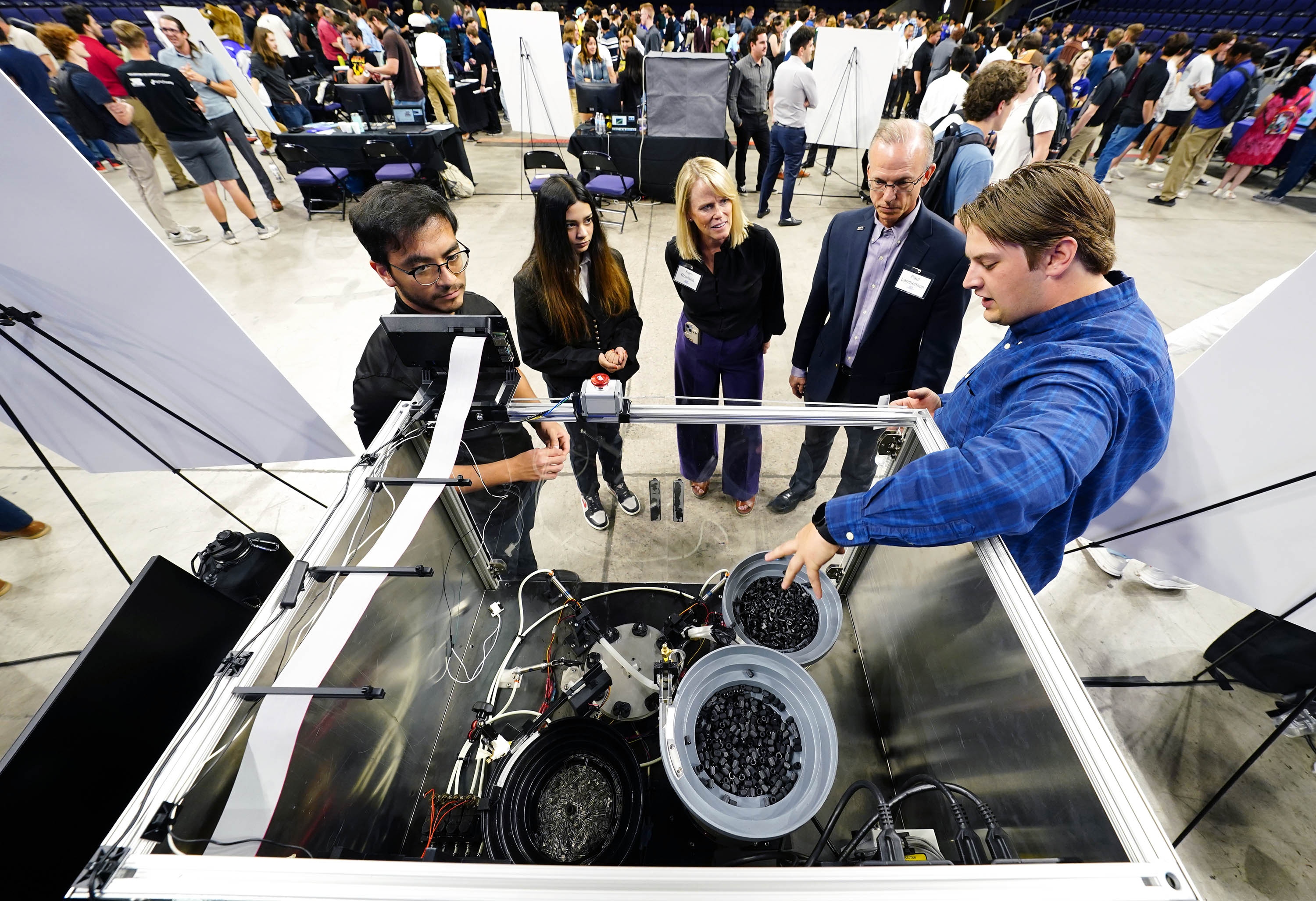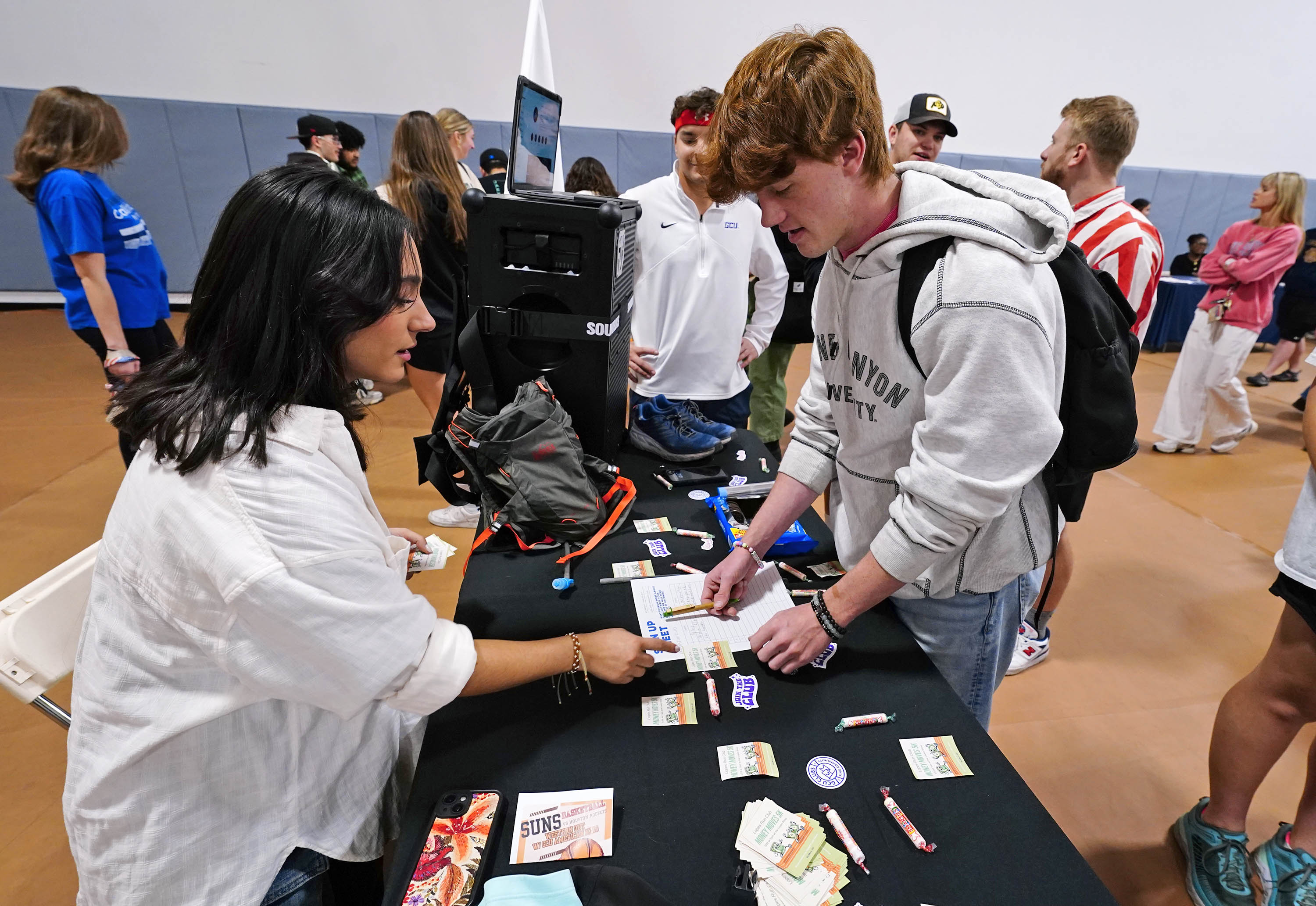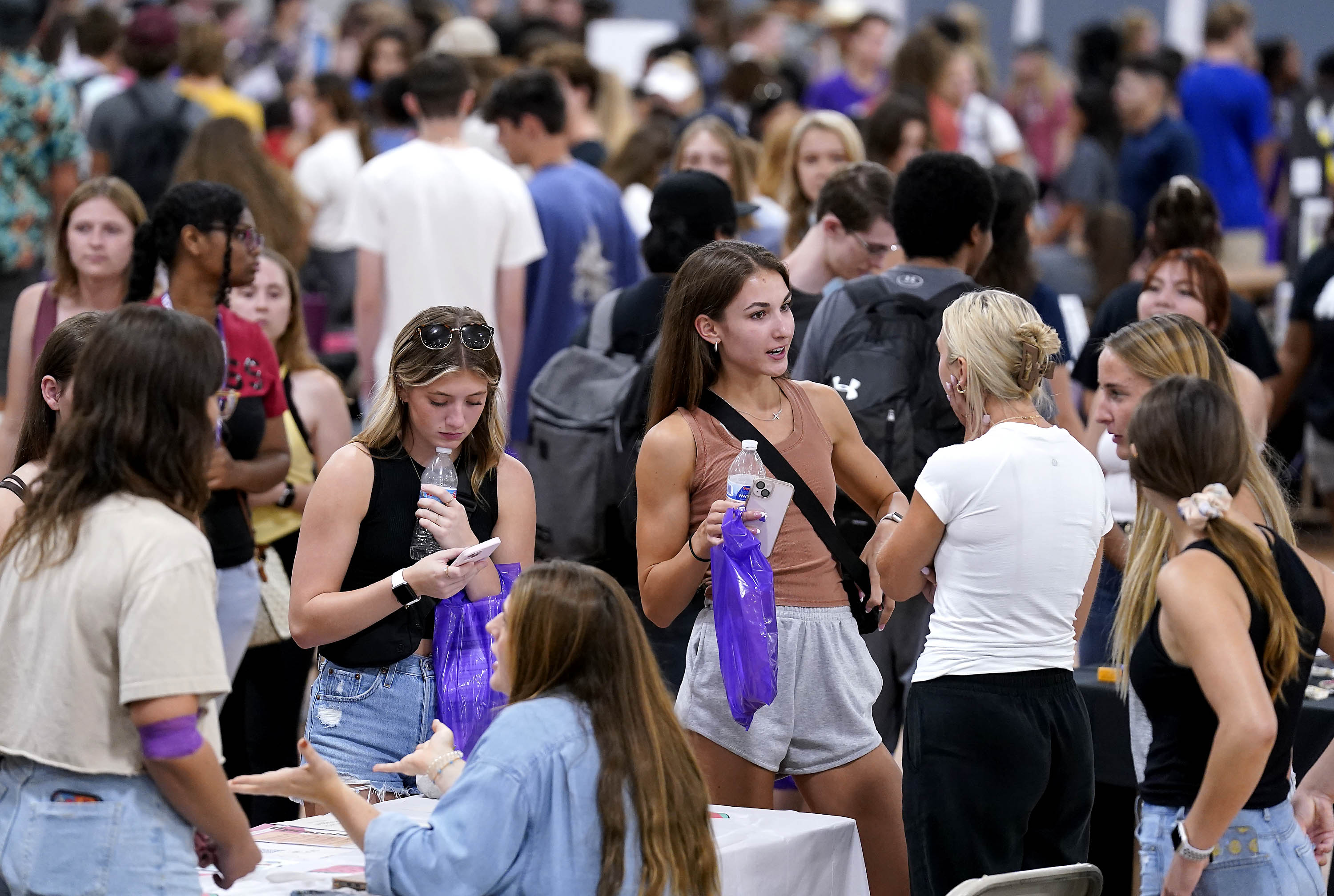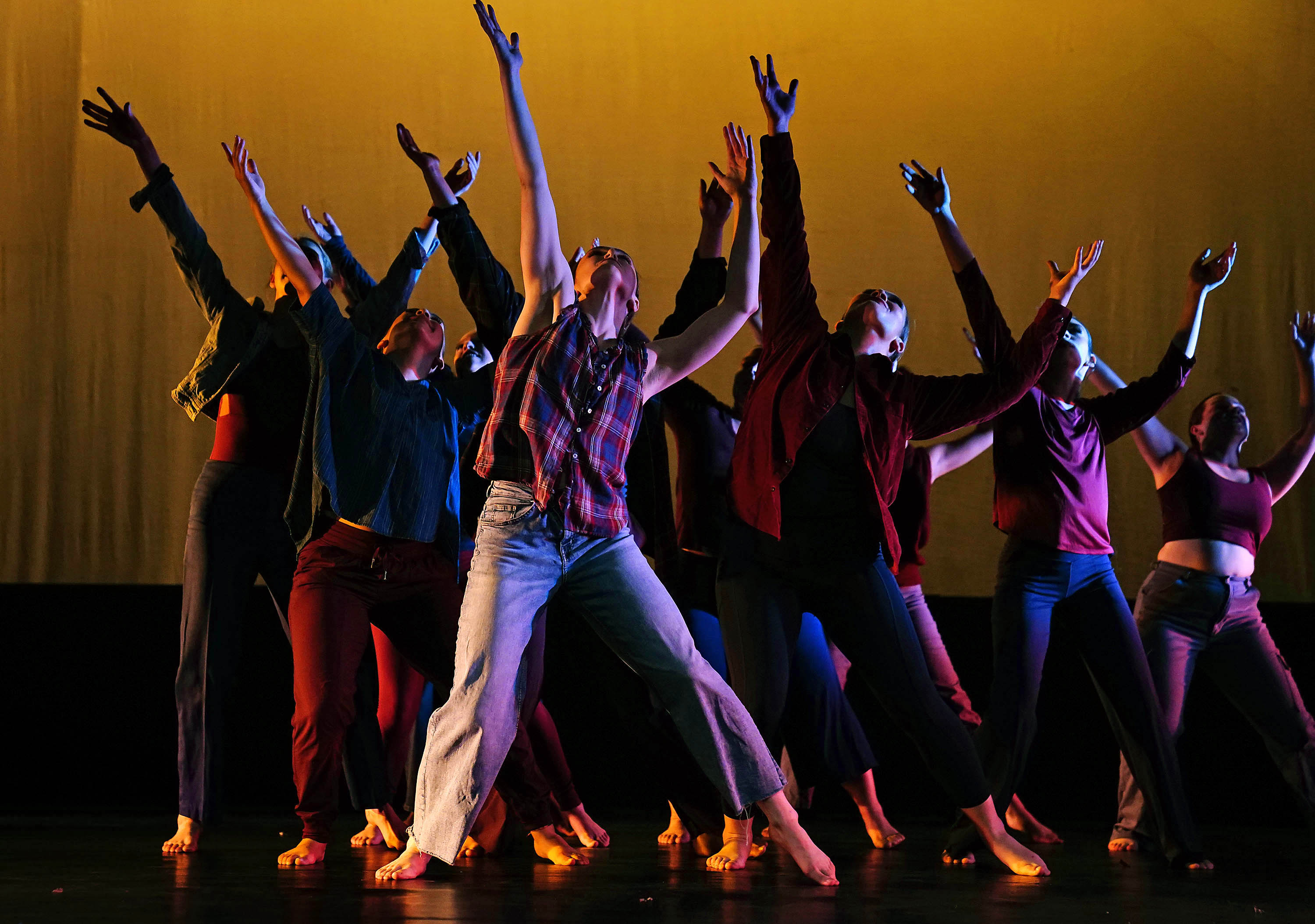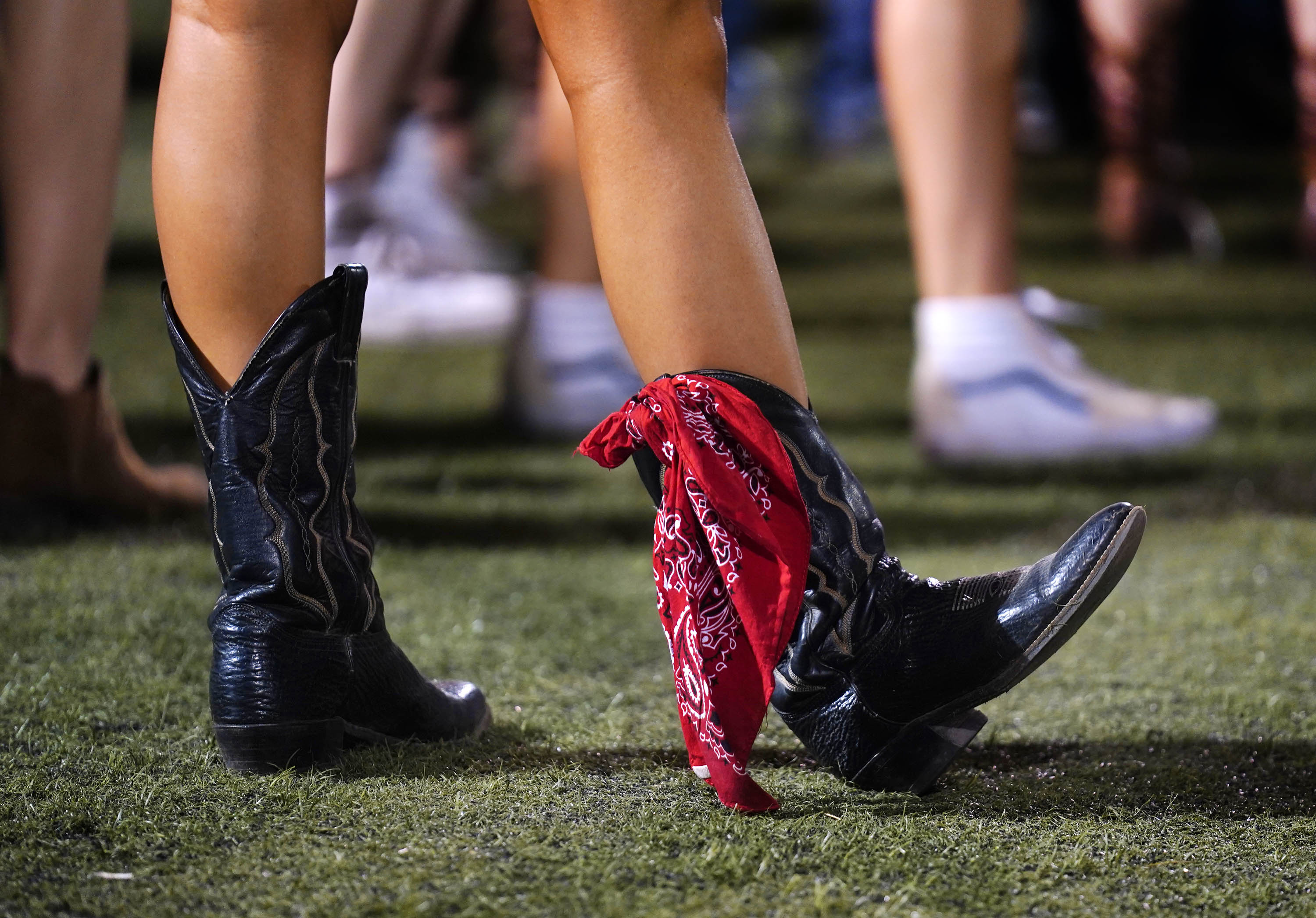
By Lana Sweeten-Shults
GCU News Bureau
Clothes may make the man, but the dress makes the documentary – at least it does for Grand Canyon University Costume Designer and assistant professor Nola Yergen.
It is through a wedding dress, a fabulously bejeweled garment dappled with real garnets and pearls on silk, that Yergen tells the story of Marie de’ Medici. She was the exiled queen of France in the Renaissance who commissioned master painter Peter Paul Rubens to celebrate her life through, not one, but a cycle of 24 paintings, including “The Wedding by Proxy of Marie de’ Medici to King Henry IV.”
It is in that painting, housed these days at the Louvre in Paris, that the gown demands attention for all its splendor, and it is in Yergen's 9-minute documentary, “Dressing a Renaissance Queen,” that a reproduction of the stunning garment aims to wow viewers.
The documentary film, written by Yergen (she also stands in for the queen), recently made the list of works selected for the 10th Annual Lady Filmmakers Festival, running from Thursday to Sunday at the Wilshire Screening Room in Beverly Hills. Festival organizers will show the short film at 4:15 p.m. on Sept. 30.
Yergen wasn't planning to make a film documentary.
“I was doing my curriculum for costume design last semester. I found when I was doing this fashion history section this really great video about 18th century dress, and I was, like, ‘Oh that’s cool, I bet there’s one of these for all the time periods, especially Renaissance. … I’m looking and hunting and the videos that I find are just terrible,” said Yergen, who also is a master costumer on the sci-fi and costume "con" scene ("convention" scene) and shares her love of costuming on her website, CostumeTrek.
That’s when inspiration struck.
She made a complete Elizabethan ensemble some years ago – “from stockings to undergarments – everything is historically accurate." She even made Renaissance shoes.
Yergen decided to produce a video about the dress of that era that she could show in her classes.
“We kicked around the idea for a while and hemmed and hawed. Then I met this gal who's a producer, and she’s like, ‘This is a great idea. You should do it.' … She said, ‘We can enter it in film festivals and it’ll do great. I thought, ‘You have a high opinion of my skills,’” Yergen said with a laugh.
A marriage by proxy
She filmed the documentary with the help of GCU Assistant Costume Designer Sarah Levinson, who dresses her in the film. GCU alumna Kay Gray appears as the queen's nurse and prepared Yergen’s hair and makeup. Brian Lapham served as director of photography. Levinson's father, Joel Levinson, helped out by running a second camera. And filmmaker Sonia Machado-Hines produced the documentary. Machado-Hines met Yergen when the GCU professor was working as the costume designer on a film in which her actor husband, Terence Bernie Hines, was involved.
One of the things that fascinated Yergen about the story of Marie de’ Medici's wedding is how the groom wasn't even present.
“It was a marriage by proxy. They didn’t even meet for two months,” she said.
The ceremony took place in October 1600, following the annulment of King Henry IV’s marriage to Margaret of Valois, who did not produce an heir. By all accounts, it was an elaborate production, despite the missing groom, with a purported 4,000 guests and lavish entertainment.
Wedding day

In the documentary, viewers will see Marie getting dressed for the ceremony with the help of her lady's maid and nurse.
“We talk about each of the garments she puts on and a little bit of the history behind it. Then we talk about her history."
The new bride was more than 20 years Henry's junior – she was 25; he was 47. According to lore, the union came about as a way to pay back Marie's father for his financial support of Henry's war efforts.
Just a year after the nuptials, the couple’s first child, Louis XIII, was born.
Though the wedding ceremony was an elegant, sumptuous, sparkling affair, it appears the marriage, in stark contrast, was decidedly less so. Henry took on many mistresses, and the court seemed to be in constant dramatic upheaval.
"Ten years after they got married, she had already given him five children or something like that, she was finally actually crowned queen,” Yergen said.
Mysteriously, “The day after she was crowned queen (on May 13, 1610), Henry was assassinated. It was a mystery, I’m sure,” Yergen said. A few hours later, the country’s leaders confirmed her as regent, and not long afterward, she banished Henry’s mistress, Catherine Henriette de Balzac, from court.
A year of research
The hand-sewn garment, which took a year to research and a year to make, holds a special place for Yergen beyond being the focus of the documentary.
While in the film it serves as Marie de’ Medici’s wedding dress, before the documentary, it was was another woman's wedding gown -- Yergen's.
“I found the material in Los Angeles. It’s real silk, real pearls, real garnets,” Yergen said.
The fabric alone cost $2,000.
"I went a little crazy," she said, adding how the dress has outlasted the marriage.
And the Elizabethan shoes she made?
“They were made from a mold of my feet. I’m not the greatest shoemaker, but mine are pretty good.”
The scene Yergen seems to love the most in the film is when she takes the same pose as the queen does in Rubens' famous painting, and then the shot fades from Yergen, dressed as the queen on her wedding day, to the famous image of the royal in the painting.
Fashioning a film for class

Now that the documentary is complete, Yergen will begin showing it to her classes at GCU to teach them about clothing in the Renaissance era.
An interesting fact she'll likely tell students: Women at the time often couldn’t simply dress themselves, as women do today. They wore about five layers of clothing -- a skirt, bodice, vest, underskirt and collar. Simply getting dressed wasn't so simple, as shown in the film.
“The higher class you are, you can’t get dressed by yourself. Sometimes you’re even sewn into the garment,” Yergen said.
And clothing back then was very much about displaying one's social status through fine fabrics and jewels, such as the queen's wedding gown. Laws were even in place, called sumptuary laws, that specified who could wear what. It's unlikely anyone but a noble woman would wear silk, pearls and garnets.
Tumultuous reign
Looking beyond Rubens' gilded painting of the queen's wedding day, Marie's reign was far from peaceful.
She aligned herself with the scandalous Concino Concini, and her 15-year-old son, Louis XIII, banished her from court. She was able to reconcile with Louis briefly, thanks to her trusted adviser, Bishop Richelieu. But the bishop’s loyalties switched to Louis, and Marie would be exiled again. She remained in exile until her death in Cologne in 1642.
Yergen’s rule of the GCU costume shop will be decidedly less tumultuous.
After a recent move of the costume shop from the Media Arts Complex on the Promenade to the College of Fine Arts and Production’s new space in the former Colangelo College of Business building, Yergen and Levinson are settling in and growing accustomed to their new space.
And, of course, they’re already hard at work designing and creating costumes for the theatre department’s next production, which, as it turns out, is “Macbeth,” a play written by another important Renaissance figure, William Shakespeare.
Contact GCU senior writer Lana Sweeten-Shults at lana.sweeten-shults@gcu.edu or at 602-639-7901.
Related content:
GCU Today: "Common thread for designers: Winning Costume-Con"
GCU Today: "New home sets stage for Fine Arts growth"
Playa Vista Direct: "A Perfect Fit: Film producer Sonia Machado-Hines says yes to the Renaissance dress"
GCU Today: 'Moon,' 'Starcatcher' ... theatre season heaven-sent
Voyage Phoenix: "Meet Nola Yergen"



